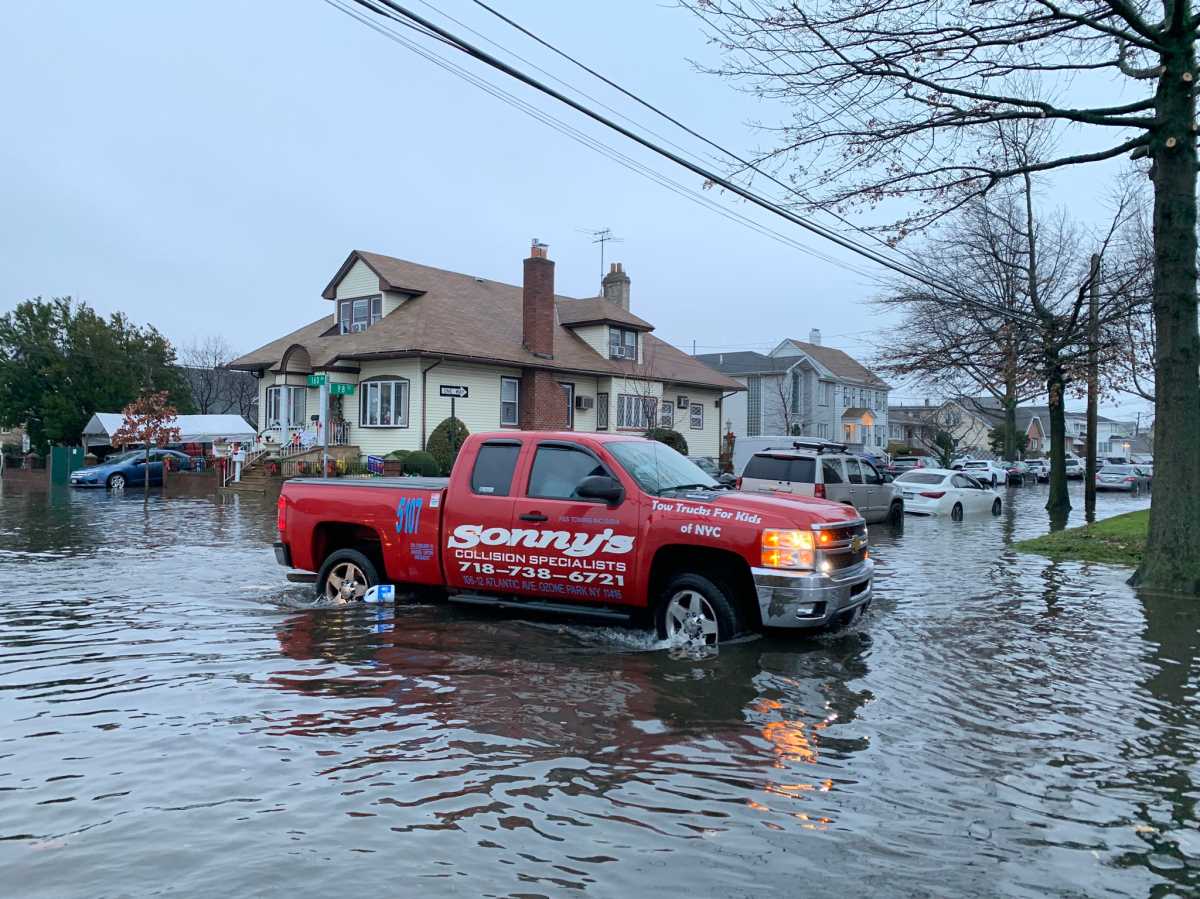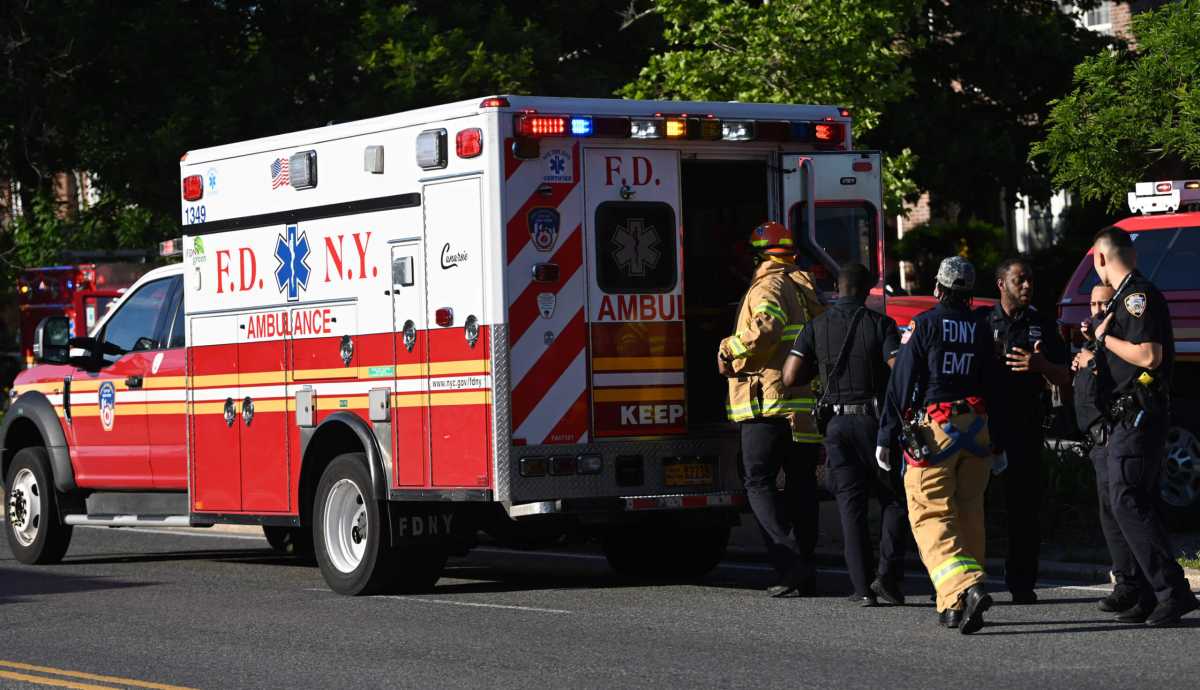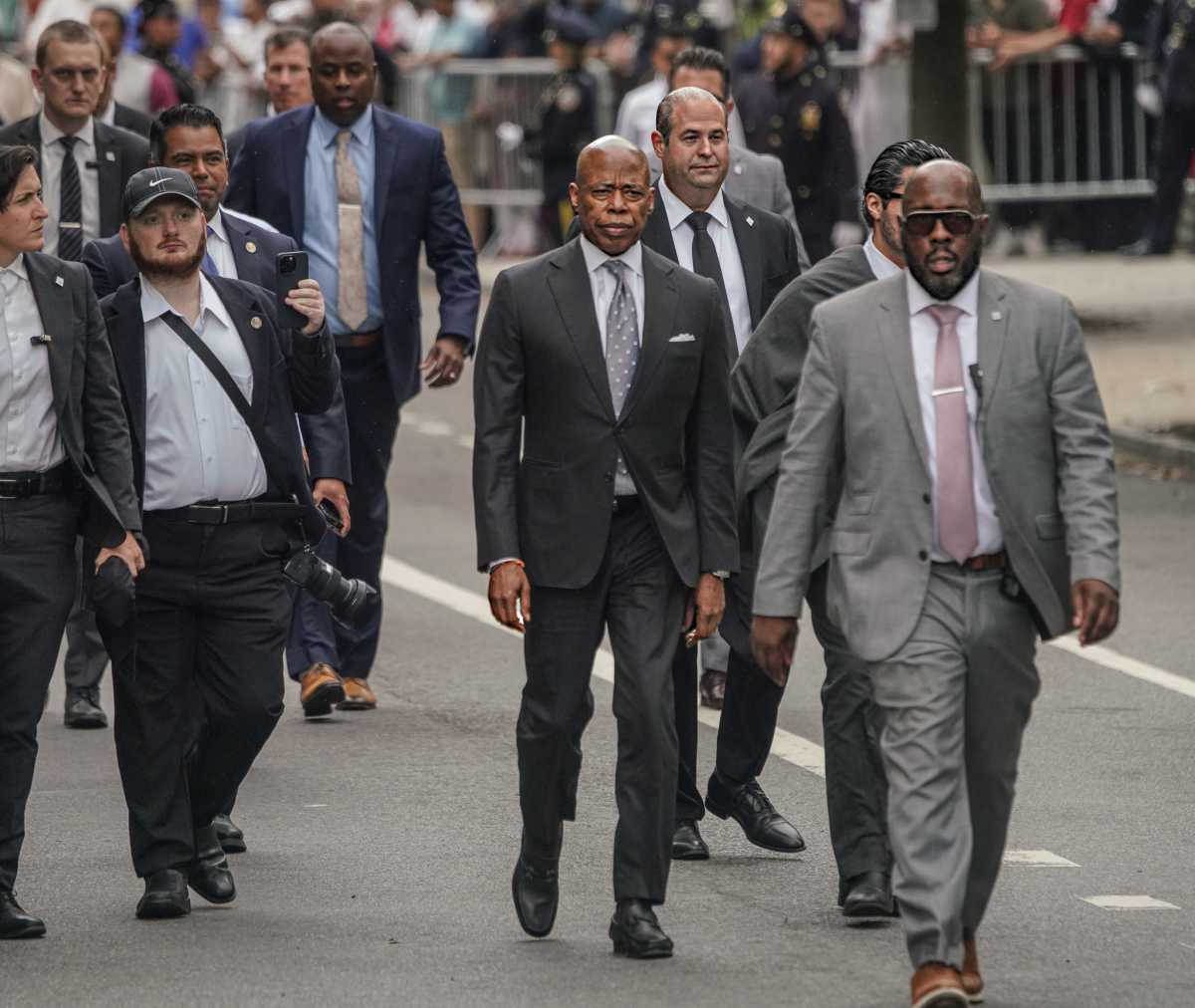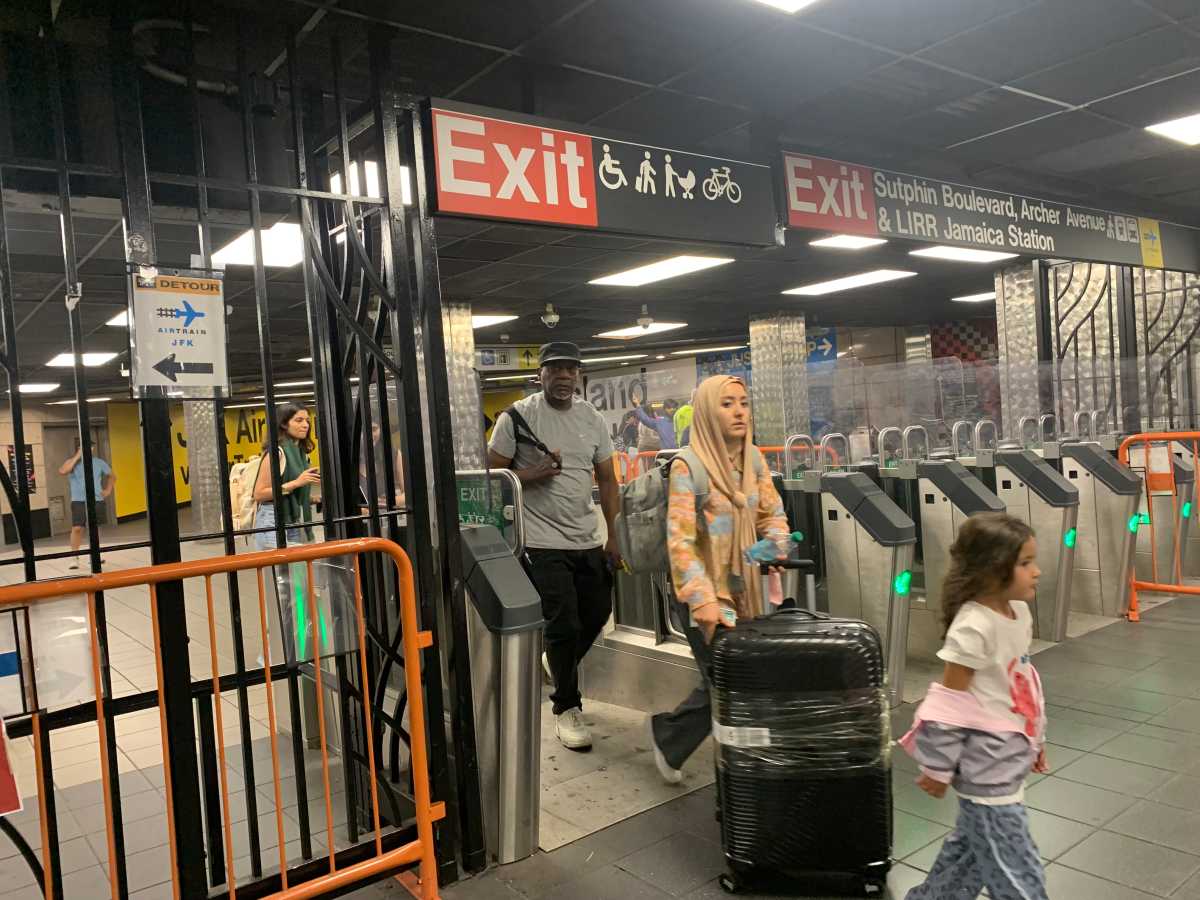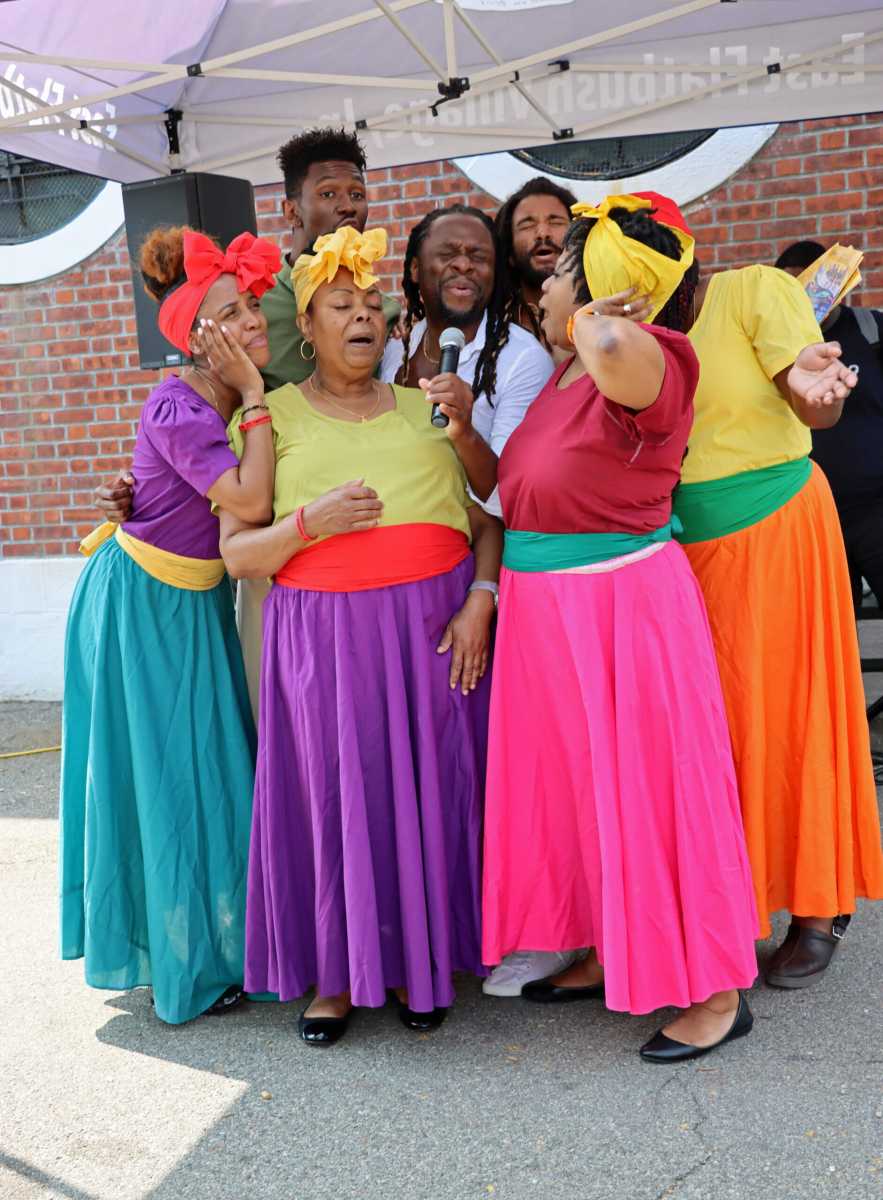In the next 15 years, over 80,000 homes in southeast Queens, Staten Island and suburbs east of New York City could be lost to floods. As climate change accelerates rising sea levels and unleashes storms with alarming frequency, intensity and deadliness, the residents of southeast Queens deserve nothing short of comprehensive flood solutions to protect their homes, health and communities.
Nearly 30,000 New Yorkers live in flood-prone areas, with immigrant and low-income communities shouldering the highest risks. In 2023 alone, New York City was hit by five “five-year storms” — extreme rainfall events that historically had an anticipated 20% chance of happening during any given year. In southeast Queens specifically, the groundwater table–the upper level of permanent saturation below the surface–has risen 40 feet since the 1970s, threatening building foundations and infrastructure. City disinvestment in the community has left southeast Queens without fully built-out public storm sewers, worsening the damaging impact of these increasingly common storm events. While flood resiliency is a city-wide problem, leaders must prioritize southeast Queens as a high-risk area and repair decades of neglect.
Last Saturday, environmental advocacy groups, flood resiliency service providers and over 100 residents gathered to address this all-too-familiar threat of flooding. Elected leaders, including Council Member Nantasha Williams, Assemblymember Khaleel Anderson, Assemblymember Clyde Vandel and Senator James Sanders, spoke about the urgency of systemic solutions for flood mitigation and resiliency. Throughout the town hall event, community members voiced their concerns about flood risk in the community and emphasized the need for increased investment in flood resilience across the borough.
State and local legislators have a variety of opportunities to mitigate flood risk in Queens and elsewhere. The State Climate Resilient New York Act (S3590/A8088) would establish an Office of Resilience and a Resilience Task Force to assess climate-related issues—like inland flooding, stormwater infrastructure and public safety—and research solutions to address those threats. To help homeowners in Queens who experience flood-related damage and expenses on shared private property, New York State Senate Bill S4040 would allow property owners to petition for city community improvement projects involving local upgrades to shared driveways and sewer systems. This bill drew widespread support from this past weekend’s town hall attendees, specifically in St. Albans, as many residents do not have access to programs that address the unique shared private sewer systems in the neighborhood, which are in desperate need of maintenance and often exacerbate inland flooding.
At the local level, New York City has begun to address systemic gaps: the recently passed Local Law 70 mandates greater transparency from the Department of Environmental Protection in its stormwater infrastructure planning, while Council Member Nantasha Williams’ Intro 1067-B delivers long-overdue support for homeowners seeking flood assistance through direct case management. By enforcing and advancing these critical legislative efforts, leaders can finally deliver necessary relief to southeast Queens residents who have endured the unacceptable and escalating burden of chronic flooding and the costly damage left in its wake.
While recently proposed and enacted legislation lays the groundwork for a flood-resilient Queens, policy alone will not solve the problem. Achieving comprehensive, sustainable, long-term relief requires on-the-ground investments. This means establishing a combination of stormwater management practices that absorb and divert rainfall, such as rain gardens, permeable pavement, bluebelt diversions to streams and ponds, enhanced overflow drainage systems and flood-resilient construction with waterproof materials and backwater valves. Implementing these solutions at scale and securing dedicated funding for both future resilience and repair for existing damage is essential. Every dollar spent on flood mitigation yields $13 in recovery savings, clearly demonstrating that proactive investment isn’t just prudent; it’s crucial for flood-resilient Queens.
The escalating flood crisis in southeast Queens—fueled by climate change and compounded by decades of infrastructural neglect—demands immediate and decisive action. The recent town hall underscored the community’s urgent needs, while equipping residents with vital tools to confront the crisis. But resources for homeowners alone are not enough; concrete systemic solutions are paramount. Advancing state legislation like the Climate Resilient New York Act and Senate Bill S4040, alongside fully implementing local measures like Local Law 70 and Intro 1067-B, charts a necessary policy path forward. Yet lasting resilience requires more than laws; it requires sustained investment in real-world flood defenses: stormwater infrastructure, resilience property retrofits, and proactive, data-informed planning. The time for comprehensive, coordinated action to protect these vulnerable homes and communities is now.
Bill Scarborough is the President of the Southeast Queens Residents Environmental Justice Coalition. Niki Cross is a Staff Attorney for the New York Lawyers for the Public Interest.

